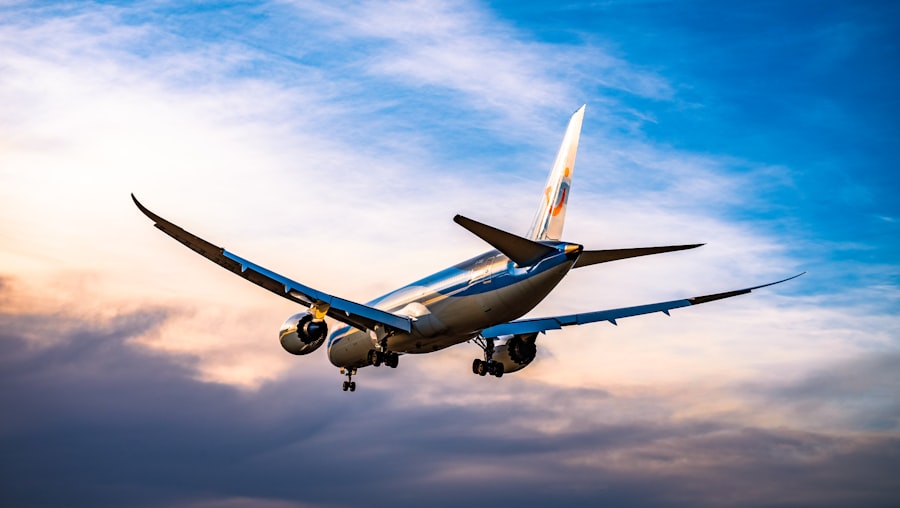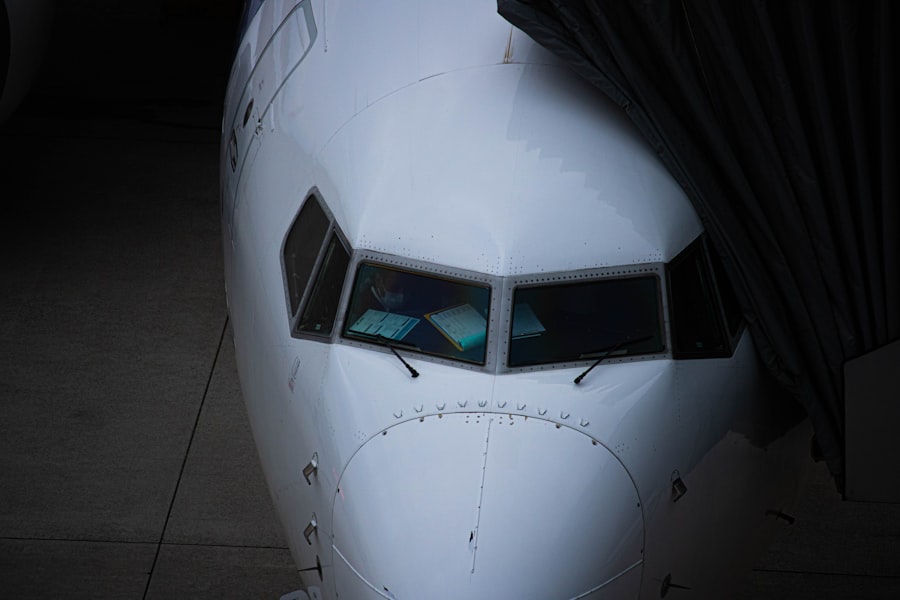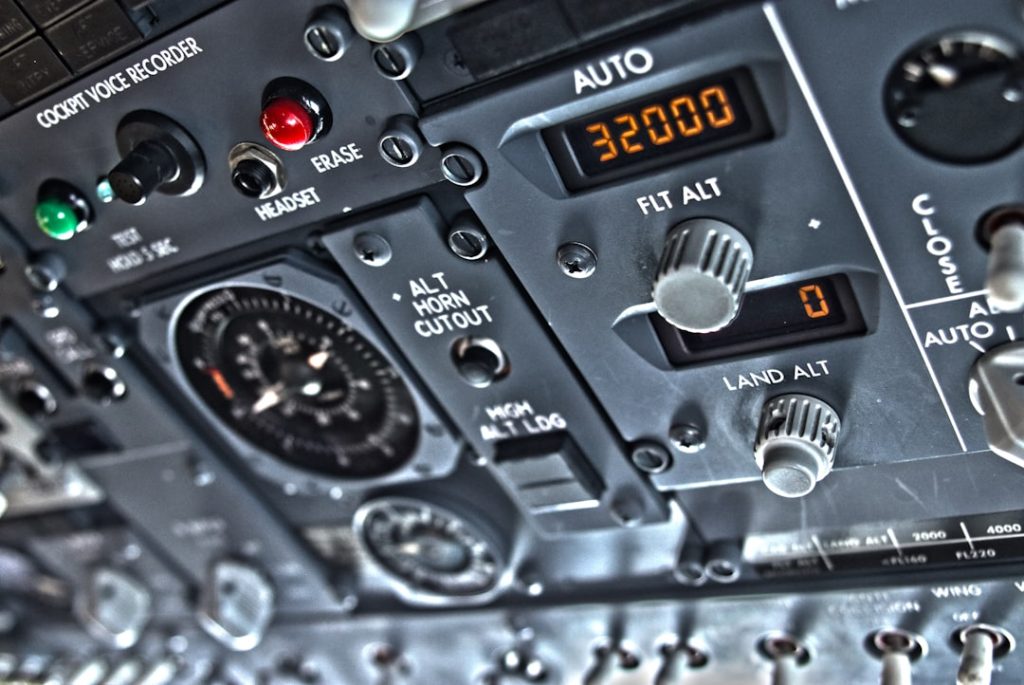Boeing, a titan in the aerospace industry, has consistently pushed the boundaries of aviation technology. As the world grapples with the challenges of climate change, economic pressures, and evolving passenger expectations, Boeing has embarked on a journey of innovation that seeks to redefine the future of air travel. The company’s latest innovations encompass a wide array of advancements, from sustainable aviation solutions to cutting-edge technology integration.
These developments not only aim to enhance operational efficiency but also prioritize environmental stewardship and passenger comfort. In recent years, Boeing has recognized the imperative for the aviation sector to adapt to a rapidly changing landscape. The company has invested heavily in research and development, collaborating with various stakeholders to create solutions that address both current and future challenges.
This commitment to innovation is evident in Boeing’s strategic initiatives, which focus on sustainability, advanced materials, and next-generation aircraft designs. By leveraging its extensive expertise and resources, Boeing is poised to lead the industry into a new era of aviation that balances performance with responsibility.
Key Takeaways
- Boeing is leading the way in aviation innovation with its latest advancements in sustainable solutions, advanced materials, next-generation aircraft designs, cutting-edge technology integration, and enhanced passenger experience.
- Sustainable aviation solutions are a key focus for Boeing, with a commitment to reducing environmental impact through fuel-efficient aircraft and alternative propulsion systems.
- Advanced materials and manufacturing techniques are revolutionizing aircraft production, allowing for lighter, stronger, and more fuel-efficient designs.
- Next-generation aircraft designs from Boeing are pushing the boundaries of aerodynamics, efficiency, and passenger comfort, setting new standards for the industry.
- Cutting-edge technology integration is at the forefront of Boeing’s innovations, with a focus on connectivity, automation, and safety features to enhance the flying experience.
Sustainable Aviation Solutions
Sustainability has emerged as a cornerstone of Boeing’s innovation strategy. The company is actively developing sustainable aviation fuels (SAFs) that can significantly reduce greenhouse gas emissions compared to traditional jet fuels. These biofuels are derived from renewable resources such as agricultural waste, cooking oil, and other biomass sources.
Boeing’s collaboration with various fuel producers aims to scale up the production of SAFs, making them more accessible and economically viable for airlines worldwide. For instance, in 2021, Boeing partnered with several airlines to conduct test flights using SAF blends, demonstrating the feasibility of integrating these fuels into existing aircraft engines. In addition to SAFs, Boeing is exploring electric and hybrid-electric propulsion systems as part of its commitment to reducing the carbon footprint of air travel.
The company has initiated projects that focus on developing electric aircraft capable of short-haul flights, which could revolutionize regional travel. By harnessing advancements in battery technology and electric propulsion systems, Boeing aims to create aircraft that not only meet regulatory standards but also exceed passenger expectations for efficiency and sustainability. The potential for electric aircraft to operate in urban environments further underscores Boeing’s vision for a greener future in aviation.
Advanced Materials and Manufacturing Techniques

The aerospace industry has long been at the forefront of material science, and Boeing continues this tradition by investing in advanced materials that enhance aircraft performance while reducing weight. One notable example is the use of carbon-fiber-reinforced polymer (CFRP) composites, which offer superior strength-to-weight ratios compared to traditional aluminum structures. These materials not only contribute to fuel efficiency but also improve the overall durability and lifespan of aircraft components.
Boeing’s 787 Dreamliner is a prime illustration of this innovation, as it incorporates approximately 50% composite materials in its structure. Moreover, Boeing is pioneering additive manufacturing techniques, commonly known as 3D printing, to streamline production processes and reduce waste. This technology allows for the creation of complex components with minimal material usage, significantly lowering manufacturing costs and lead times.
For instance, Boeing has successfully implemented 3D printing for producing parts such as brackets and ducts, which were traditionally made using more resource-intensive methods. By embracing these advanced manufacturing techniques, Boeing not only enhances its operational efficiency but also positions itself as a leader in sustainable production practices.
Next-Generation Aircraft Designs
| Aspect | Metric |
|---|---|
| Efficiency | Fuel consumption per passenger mile |
| Performance | Cruising speed (mph) |
| Environmental Impact | Carbon emissions per flight |
| Technology | Use of advanced materials |
Boeing’s commitment to innovation is perhaps most evident in its next-generation aircraft designs, which are engineered to meet the demands of modern air travel while prioritizing efficiency and sustainability. The company is actively developing concepts for future aircraft that incorporate advanced aerodynamics and propulsion systems. One such design is the Boeing 797, a proposed mid-market airplane that aims to fill the gap between single-aisle and wide-body aircraft.
This new model is expected to feature improved fuel efficiency and reduced emissions, catering to airlines seeking cost-effective solutions for medium-haul routes. In addition to the 797, Boeing is exploring unconventional aircraft configurations that could redefine air travel. Concepts such as blended wing body designs promise enhanced aerodynamic performance and increased passenger capacity without compromising fuel efficiency.
These innovative designs are not merely theoretical; they are backed by extensive research and testing in wind tunnels and computational fluid dynamics simulations. By investing in these next-generation aircraft designs, Boeing is positioning itself to meet the evolving needs of airlines and passengers alike.
Cutting-Edge Technology Integration
The integration of cutting-edge technology into aircraft systems is another area where Boeing excels. The company is leveraging advancements in artificial intelligence (AI), machine learning, and data analytics to enhance operational efficiency and safety. For example, Boeing’s use of predictive maintenance technologies allows airlines to monitor aircraft systems in real-time, identifying potential issues before they escalate into costly repairs or safety concerns.
This proactive approach not only minimizes downtime but also optimizes maintenance schedules, ultimately leading to improved fleet reliability. Furthermore, Boeing is incorporating advanced avionics systems that enhance pilot situational awareness and decision-making capabilities. The introduction of augmented reality (AR) technologies into cockpit displays provides pilots with critical information in an intuitive format, improving their ability to respond to dynamic flight conditions.
These innovations are complemented by Boeing’s commitment to cybersecurity measures that protect sensitive data from potential threats. By integrating these cutting-edge technologies into its aircraft, Boeing is not only enhancing safety but also paving the way for a more efficient and connected aviation ecosystem.
Enhanced Passenger Experience

As air travel continues to evolve, enhancing the passenger experience has become a focal point for Boeing’s innovations. The company recognizes that comfort and convenience are paramount for travelers, leading to the development of features that cater to modern passenger needs. One significant advancement is the incorporation of larger windows and improved cabin lighting in new aircraft designs, which create a more spacious and inviting atmosphere.
Additionally, Boeing is exploring innovative seating configurations that maximize space while ensuring passenger comfort on long-haul flights. Boeing is also investing in in-flight connectivity solutions that allow passengers to stay connected during their journeys. The integration of high-speed internet access and entertainment options enhances the overall travel experience, enabling passengers to work or relax while in transit.
Furthermore, Boeing’s collaboration with technology partners aims to develop personalized services that cater to individual preferences, from customized meal options to tailored entertainment selections. By prioritizing the passenger experience in its innovations, Boeing is setting new standards for comfort and convenience in air travel.
Future of Urban Air Mobility
The concept of urban air mobility (UAM) represents a transformative shift in how people navigate urban environments. Boeing is at the forefront of this movement, exploring innovative solutions for aerial transportation within cities. The company’s investment in electric vertical takeoff and landing (eVTOL) aircraft reflects its commitment to developing sustainable urban transportation options that alleviate congestion on roadways.
These eVTOL vehicles are designed for short-distance travel, offering a rapid alternative for commuters while minimizing environmental impact. Boeing’s approach to UAM involves collaboration with various stakeholders, including city planners, regulatory agencies, and technology partners. By engaging with these entities early in the development process, Boeing aims to create a comprehensive framework for integrating eVTOL operations into existing urban infrastructure.
This includes considerations for air traffic management systems that ensure safe and efficient operations within crowded airspace. As urban populations continue to grow, Boeing’s vision for UAM could play a pivotal role in shaping the future of transportation in metropolitan areas.
Collaboration with Industry Partners and Regulatory Agencies
Boeing understands that innovation in aviation cannot occur in isolation; it requires collaboration with industry partners and regulatory agencies to ensure successful implementation. The company actively engages with airlines, suppliers, research institutions, and government bodies to foster an ecosystem conducive to innovation. For instance, Boeing’s partnerships with universities focus on advancing research in aerospace engineering and sustainable technologies, creating a pipeline of talent equipped to tackle future challenges.
Moreover, collaboration with regulatory agencies is crucial for ensuring that new technologies meet safety standards while promoting innovation. Boeing works closely with organizations such as the Federal Aviation Administration (FAA) and the European Union Aviation Safety Agency (EASA) to navigate the complex regulatory landscape surrounding emerging technologies like eVTOLs and autonomous flight systems. By fostering these partnerships, Boeing not only accelerates its innovation efforts but also contributes to shaping policies that govern the future of aviation.
In summary, Boeing’s latest innovations reflect a comprehensive approach to addressing the multifaceted challenges facing the aviation industry today. Through sustainable aviation solutions, advanced materials and manufacturing techniques, next-generation aircraft designs, cutting-edge technology integration, enhanced passenger experiences, urban air mobility initiatives, and collaborative efforts with industry partners and regulatory agencies, Boeing is poised to lead the way into a new era of aviation that prioritizes efficiency, sustainability, and passenger satisfaction.


